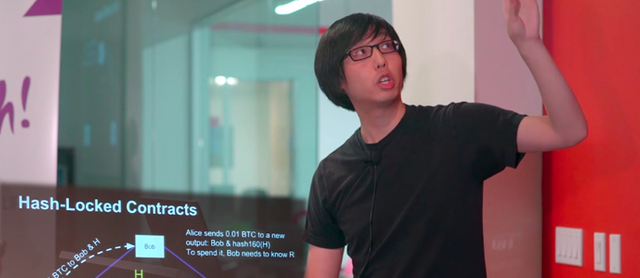By CoinDesk - June 10, 2017

While the usual drumbeat of cryptocurrency innovation calls for ‘banking the unbanked’, a startup called Omise actually has the opposite goal: “unbanking the banked’.
And with the help of Joseph Poon, co-author of bitcoin’s Lightening Network white paper, the Thailand-based payment gateway network is building a decentralized exchange based on ethereum to move toward that goal.
The decentralized exchange, which Poon has written another white paper for, is built directly into the company’s upcoming proof-of-stake blockchain, OmiseGo. Once it’s finished, users will be able to trade fiat currencies for cryptocurrencies, or exchange between almost any cryptocurrencies (say bitcoin for ether) without a third party like Coinbase or Kraken.
Eliminating middleman was cryptocurrency’s original value proposition. Not to mention, trust in third parties is arguably what led to some of bitcoin’s most publicized disasters, including the fall of Mt Gox in 2014 and the $65m hack of Bitfinex last summer.
In contrast, Poon described the project as a sign of what’s to come in the cryptocurrency space, calling the decentralized trading trend “a big deal”.
He told CoinDesk:
“The entire point of money is to trade for other things. To do that in a decentralized way is sort of a no-brainer.”
And others agree. Decentralized exchanges are all the rage these days, with Shapeshift’s Prism, 0x and Swap all launching recently around the idea of ditching third parties in exchange.
Poon, who also recently helped write the specifications for Purse’s extension blocks scaling project, expects even more such projects to arrive – maybe a couple of dozen – and soon.
Resolving issues
The launch of the OmiseGo blockchain is slated for Q4 2017, supported by the launch of a wallet. And with all that, Poon believes it will be more feature-rich than competing projects.
“This is designed to be a full-blown exchange,” he explained, arguing it implements fine details other exchange projects haven’t yet considered.
To do so, the decentralized exchange is being built with both an execution engine (which makes the trade between users) and an order book (the component that lists the buyers and sellers looking to move their cryptocurrency and at what price).
“A lot of people talk about [these systems], but they don’t talk about: How do you know who’s going to be your counterparty? How do you know what price you’re going to trade at? How do you ensure there’s orderly execution? [OmiseGo] is going to resolve those issues,” Poon said.
And, an important difference from other projects is that it uses a decentralized system to match buyers with sellers.
How does it do that? As mentioned, the decentralized exchange is baked directly into the blockchain and its consensus rules. All nodes must follow these rules when checking whether blocks and transactions are valid. In addition to checking whether transactions in a block are valid – as they traditionally do – nodes also monitor the order book.
So, if Bob aims to trade Alice one ether for one ‘bobcoin’, then the nodes check if the orders match. If they do, the nodes approve of the transfer.
Unlike other decentralized exchanges such as 0x (winner of the Proof of Work pitch competition at CoinDesk’s Consensus 2017 conference), which is only focused on exchanging ERC-20 standardized tokens, OmiseGo users will be able to trade all but one cryptocurrency, monero.
The right connections
As an established payment gateway serving six countries in Southeast Asia, Omise might have the right connections to move the project forward. The company already helps banks and telecom companies with their payment system backends, and plans to offer clients the choice of moving onto the public OmiseGo network.
“Omise’s existing roles will be leveraged to gain adoption for the network and the framework managing access to the digital money issued on it,” OmiseGo special advisor Thomas Greco told CoinDesk.
So, the ultimate goal is to use the decentralized exchange to streamline fiat and cryptocurrency exchanges between these various clients.
Plus, in Poon’s eyes, it’s important that OmiseGo is a “public” blockchain project that anyone can join, because it offers a much better model than popular private blockchain consortium efforts.
Omise believes using a public blockchain solves industry coordination problems between parties that don’t necessarily trust each other. Private blockchains, he added, are merely recreating the traditional centralized clearinghouse system.
Poon said:
“So instead, they’re like, ‘Screw it, let’s just make a decentralized system.'”
Joseph Poon image via PubNub
Hi! I am a robot. I just upvoted you! I found similar content that readers might be interested in:
https://paymentsmarket.com/striking-twice-lightnings-joseph-poon-takes-on-ethereum-exchange-project/
Downvoting a post can decrease pending rewards and make it less visible. Common reasons:
Submit